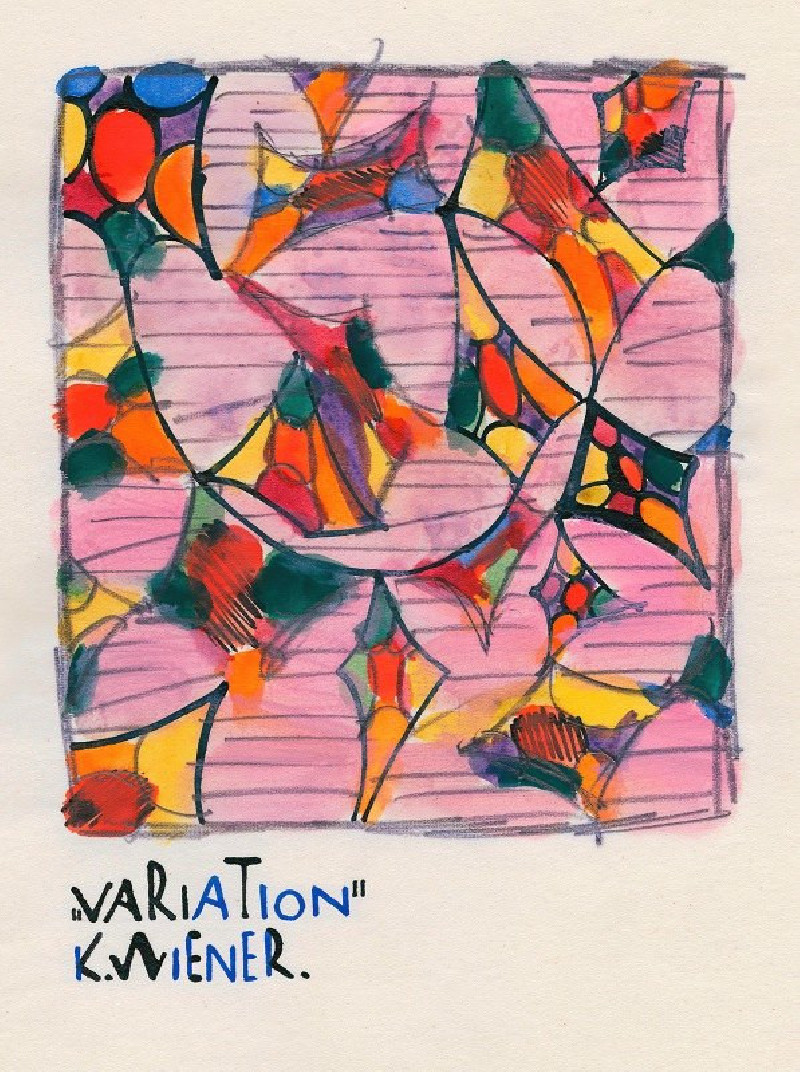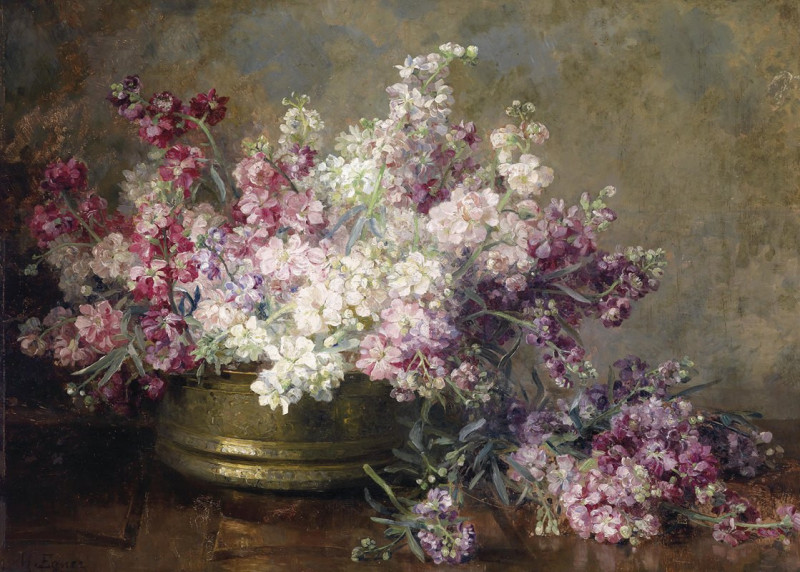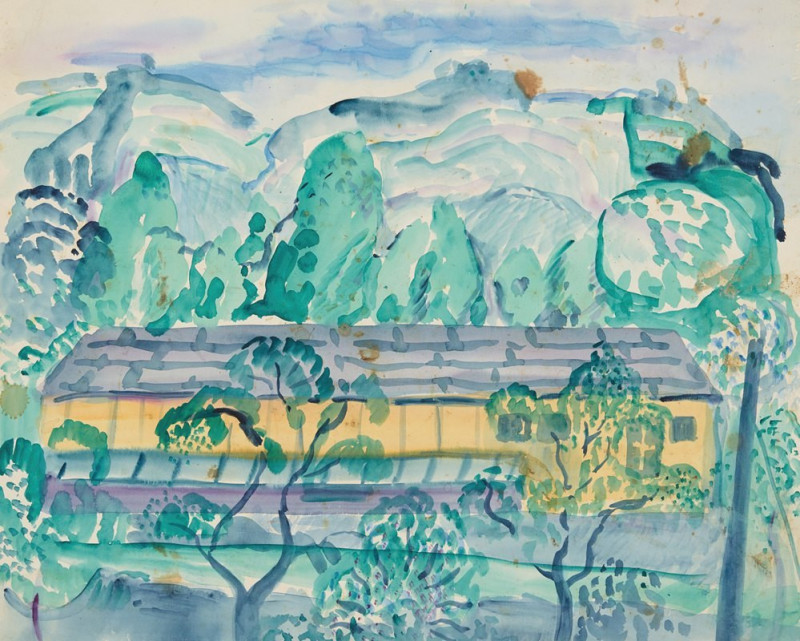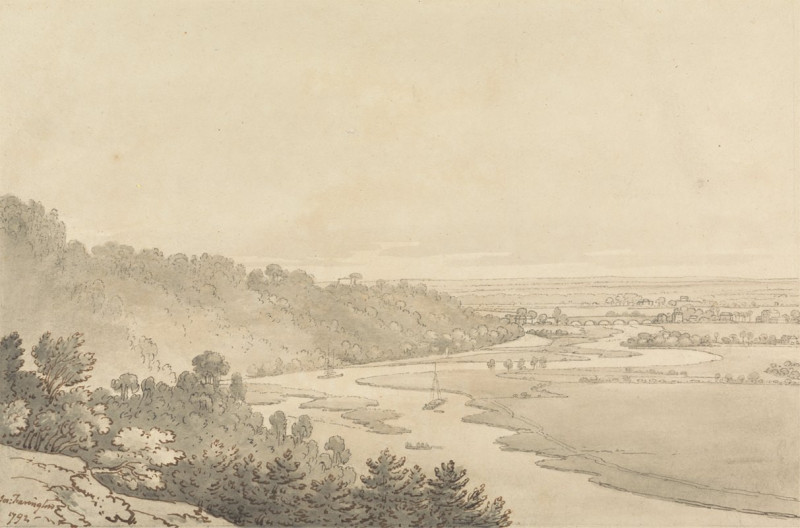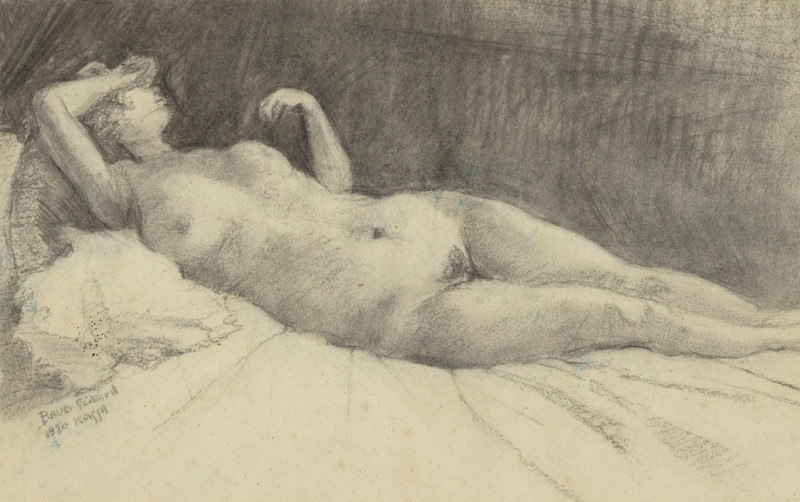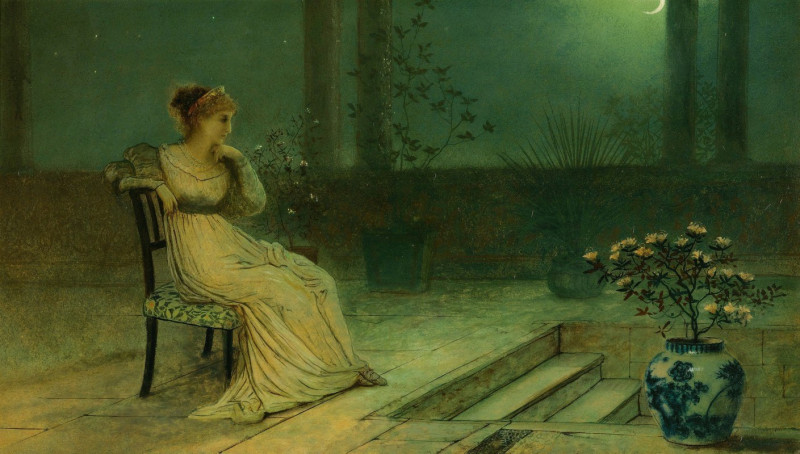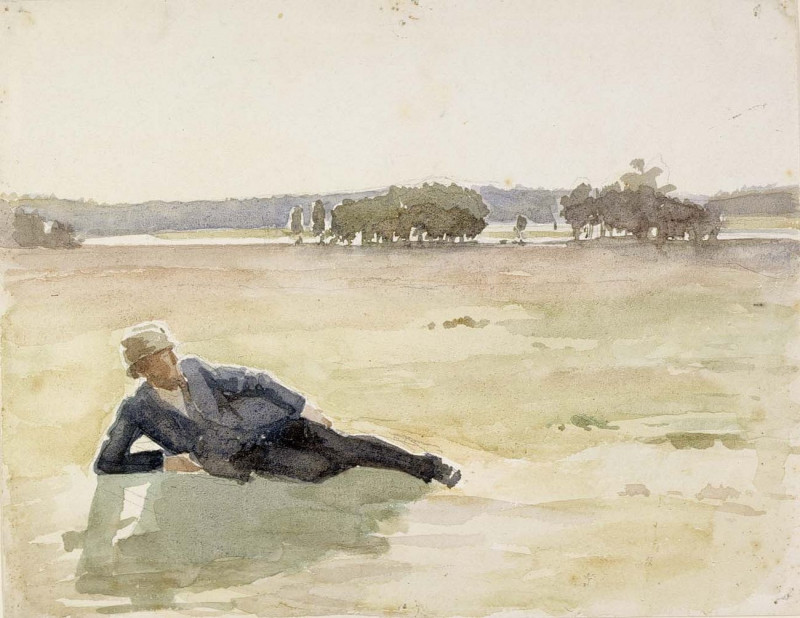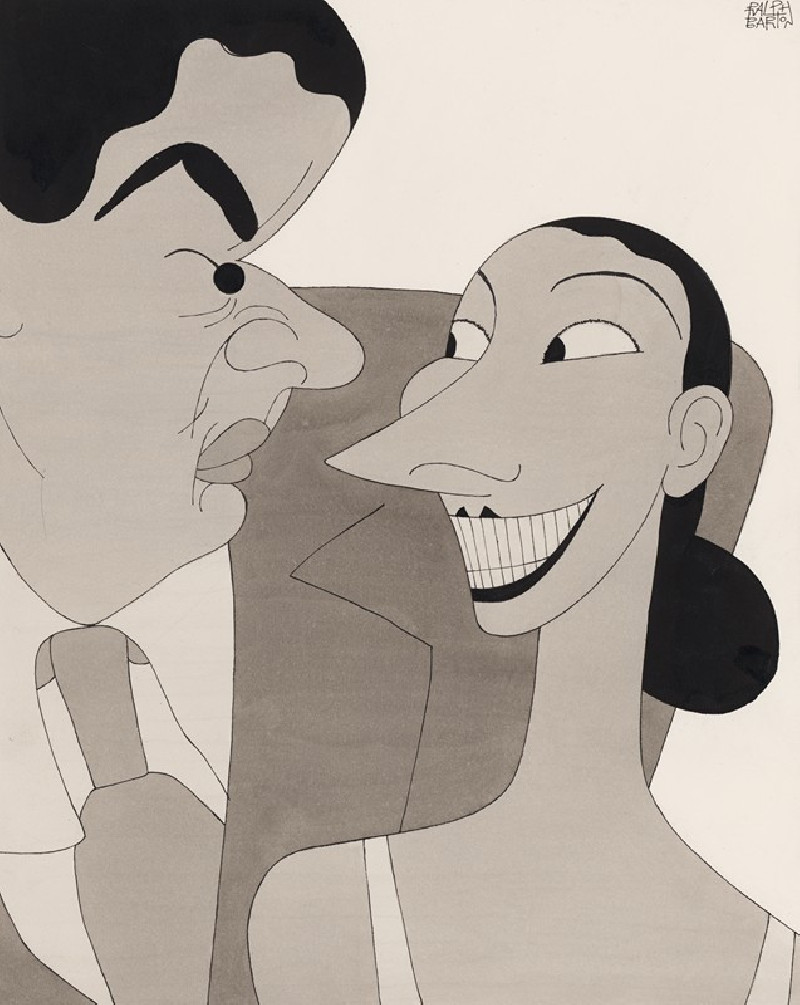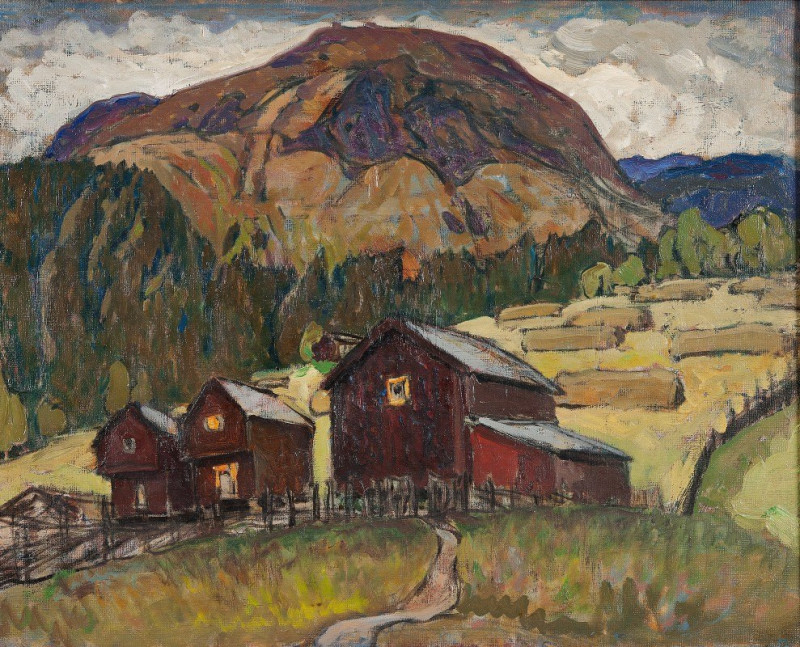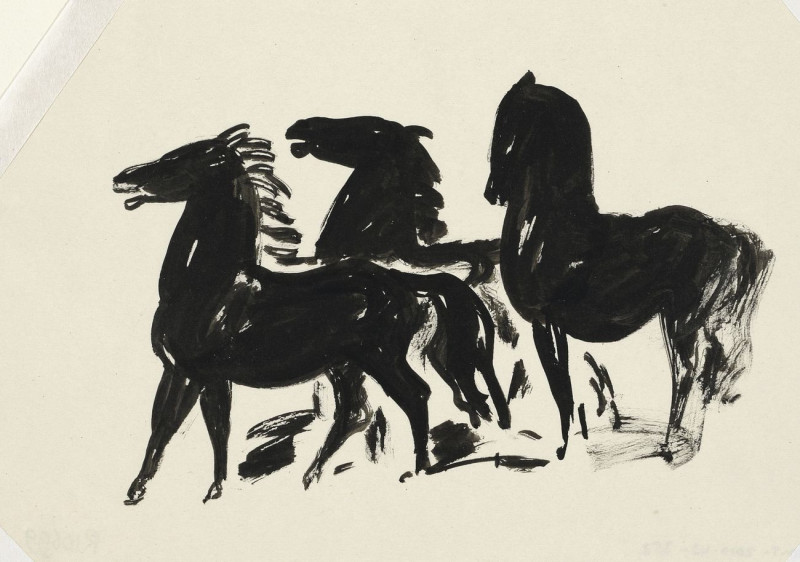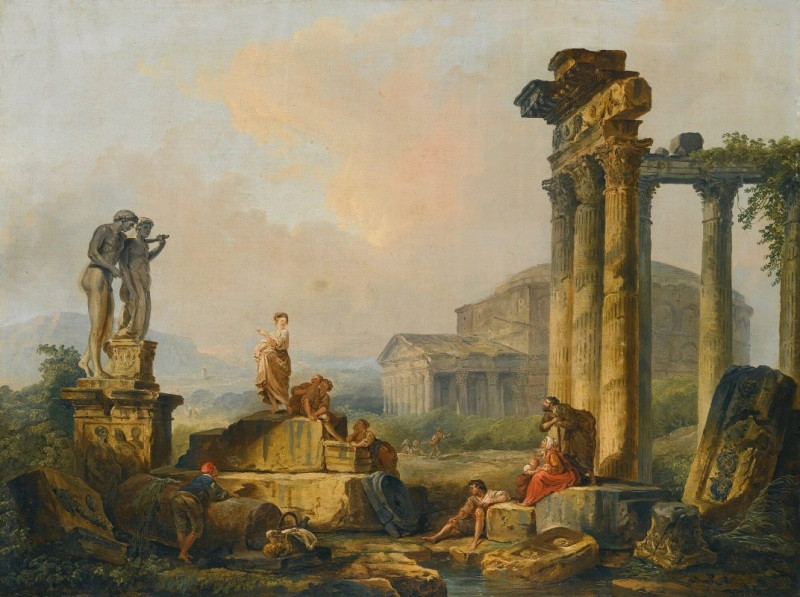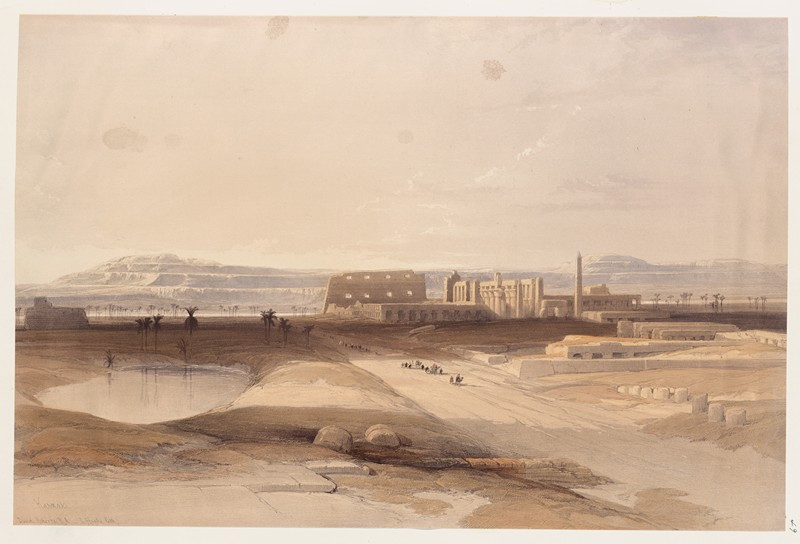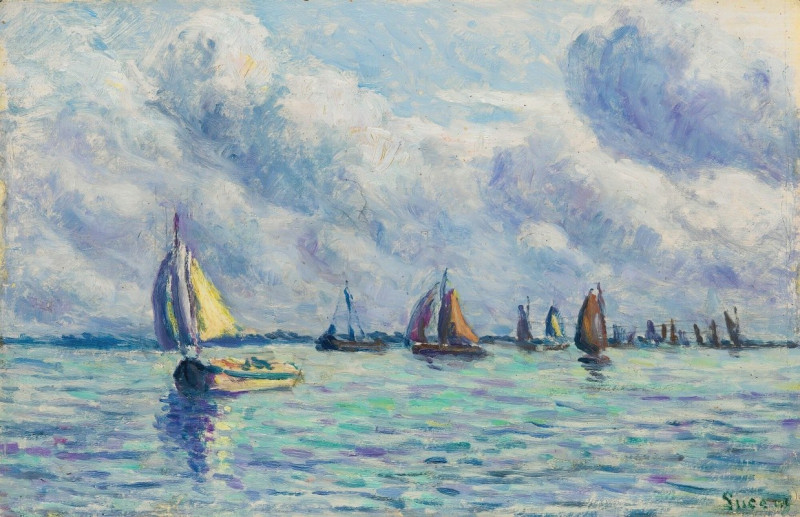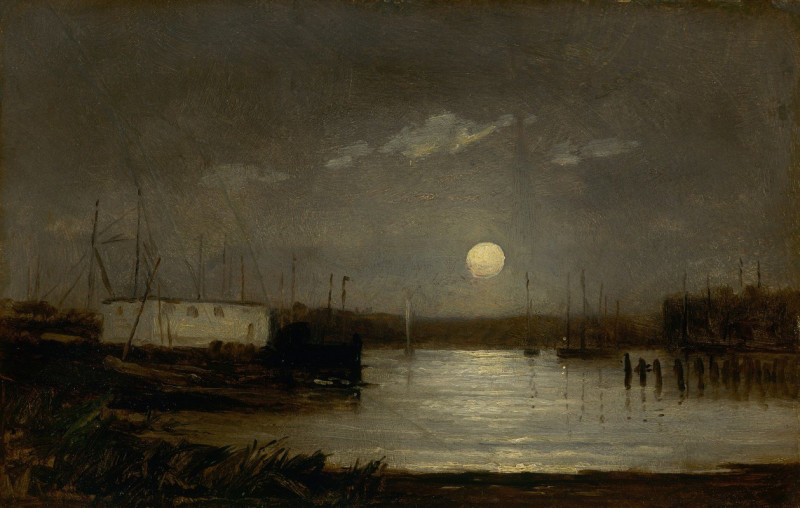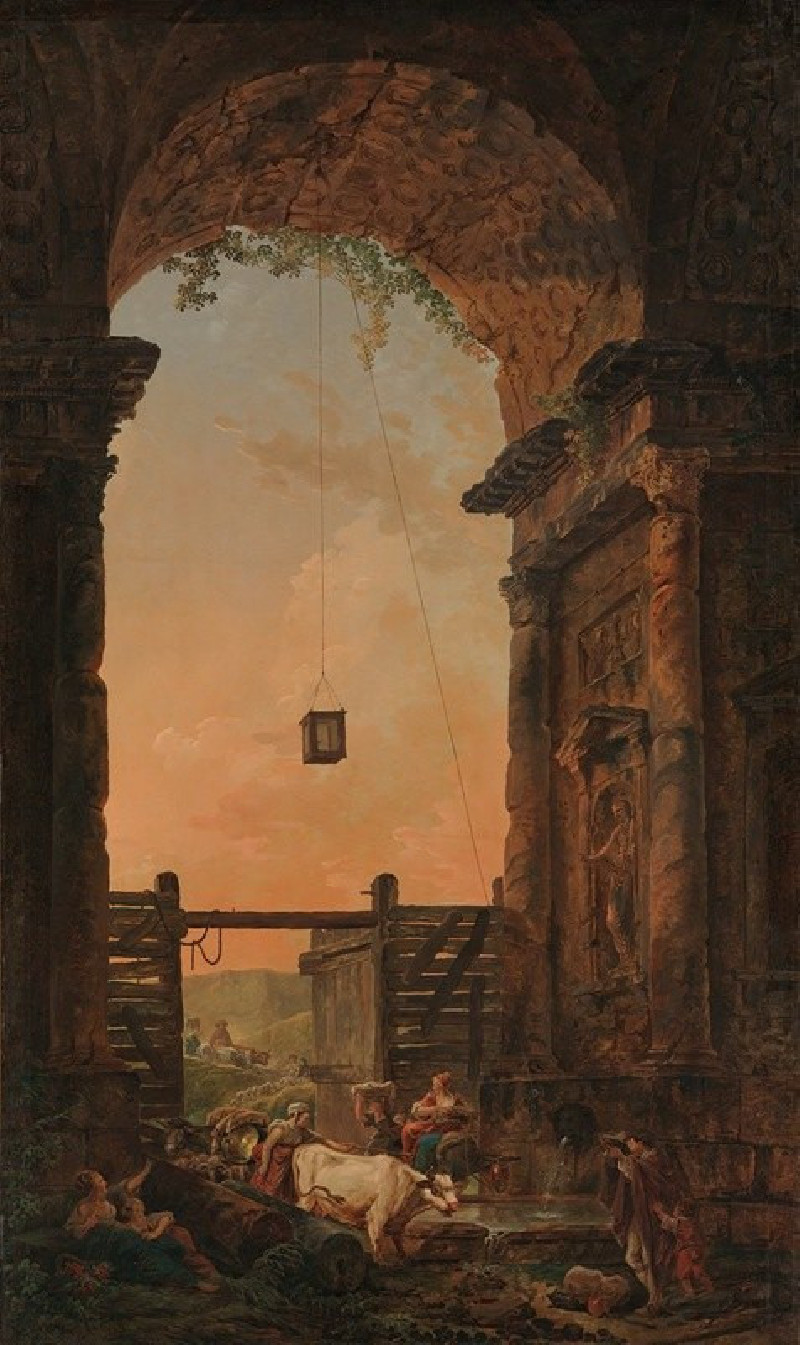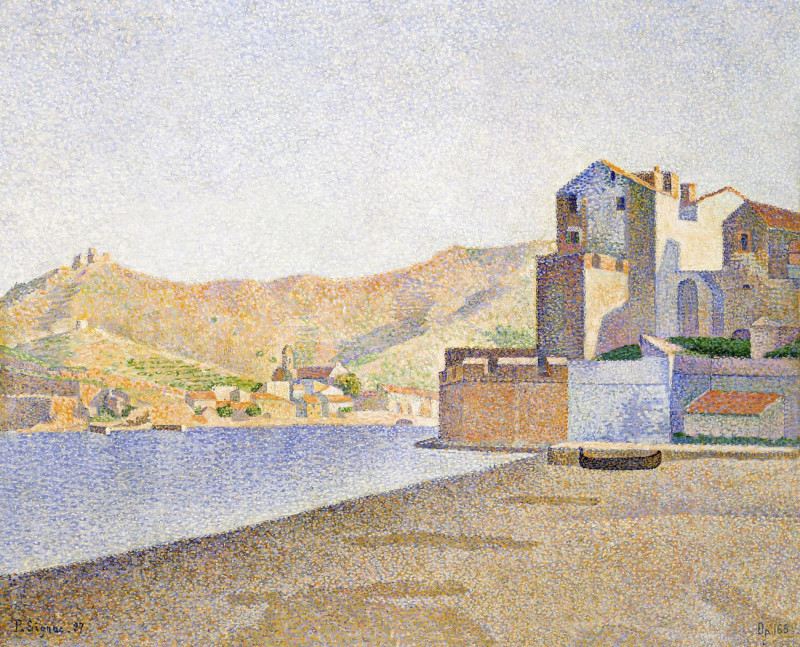Variation (around 1921)
Technique: Giclée quality print
Recommended by our customers
More about this artwork
"Variation" by Karl Wiener, created around 1921, is a vibrant and intriguing piece that captivates the viewer with its abstract beauty. At first glance, the painting seems to be a celebration of color and form, comprising vivid hues and dynamic shapes that dance across the canvas. Wiener employs bold reds, deep oranges, yellows, and touches of green, all outlined by dark, defining lines that add depth and intensity to the composition.The underlying pink striated background suggests a texture that contrasts with the smoothness of the colored forms, creating a sense of movement and rhythm. This abstract presentation might be seen as a visual representation of musical variation, where themes transform and evolve in new and unexpected ways. Wiener's work invites viewers to explore the relationships between the shapes and colors, encouraging a personal interpretation of the visual 'harmony' he creates.This painting is a fine example of early 20th-century abstract art, showcasing Wiener's skill in blending color, line, and form to achieve a composition that is both aesthetically pleasing and thought-provoking.

